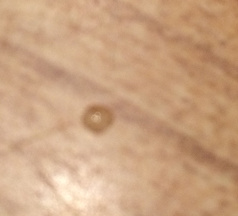Dang, you are gonna make me buy another bottle with all these requirements…
one shot = one shot
That’s the rule!
Dang, you are gonna make me buy another bottle with all these requirements…
one shot = one shot
That’s the rule!
After reading this thread I have a thought. Does it really matter if insulin leaks out or is drawn back or if a bit of air is injected-- if you do it the same each time?
We are constantly monitoring and tweaking our I/C for accuracy. So on the pen or syringe the scale we use is calibrated to the error that is inherent in the particular device. And we use that calibrated scale to gauge the amount we inject.
So while the discussion of up or down, prime or don’t prime, pen or syringe is interesting, it really has no bearing if we are consistent in our injection techniques.
Yes, what you are saying is absolutely true.
But I did want to illustrate the issue that if someone is priming a certain way that causes insulin to drip down, and people see it, it will naturally be unsettling to them.
So all issues of accuracy aside, I was simply trying to eliminate a visual problem that may be causing folks to be saying “my pen leaks after injection”. I think that is a troubling thing to see!
@Eric Every time I take an injection I see an insulin drop at the tip of my pen or syringe. Maybe because I take a relatively large amount of insulin on a single injection it has never been unsettling.
I was particularly speaking about the drop you see on the skin, not on the tip of the needle. I have never paid much attention to the needle tip when I remove it.
But these things depend on the individual and the situation . If I was taking 10 or 15 units, seeing a little drop would not be troubling at all. But if I had just dosed a 1/2 unit, seeing that little drop would be much more troubling. I would wonder if I got any of it at all!
You’re also assuming that there is absolutely zero air inside the vial. Which as we can often see-- there is always some-- and tiny amounts are introduced every time you use it… it doesn’t take much. An air bubble the size you’d find in an insulin pen could render your vehicles brakes totally worthless, and that’s a much larger system— analogy just to show how quickly a tiny bit of air would disrupt the perfect system you describe…
And of course the plunger itself is made from a soft material with some small amount of compressibility/ expandability… and the plastic vial itself would only have to expand or contract a tiny tiny amount in order to allow one tiny droplet to squeeze out the end…
I’d suggest there’s plenty of slop in he system to allow tiny amounts to be vacuumed out
We are talking about two different things.
I was not originality addressing the possibly of vacuum pulling it out. I simply suggested that if you prime with the pen up, that insulin will drip down and look like it leaked out.
That was really the whole context of my original comment. All the vacuum stuff is a different subject.
I just did this with no injection at all. It’s very simple. I primed just 1/2 a unit with the needle pointing up. I then turned the needle down and touched the needle to the tabletop.
No injection, no vacuum, nothing but a 1/2 unit of insulin dropping from the needle to the table, all from priming and nothing else.

I am only trying to help people with this thought - if you prime pointing up, be aware that some of the insulin might drip down onto the injection site and appear like a leak. Just like in the picture above.
Hopefully that issue is clear and obvious.
For the discussion on vacuum, that is a different possibility, and you would need to know a lot of things to perform the calculations, like the fluid mass density, flow velocity, static pressure and dynamic pressure, and the inner diameters and lengths of the needle and cartridge chamber, the modulus of elasticity of the plunger, as well as temperature and who knows what else. I will leave that to others. 
Lol… yeah I’m not going to do the math on it either… but I assert that the notion that it’s not possible for small Amounts of insulin to escape through the needle without the plunger moving is not accurate
And yes clearly priming a pen pointing upwards is more likely to leave spots of insulin on one’s skin… yes those are two completely separate concepts
So what is the density of insulin?
If on had a suffiently accurate scale one could try squrting 1/2 unit onto a scale and see if you can accurately get 1/2 unit.
My best scale is not accurate enough 
This was interesting.
Excerpt from the link below:
In general, the 5-unit doses were equally distributed around the target dose, whereas most of the 30-unit and almost all of the 60-unit doses were found to be below the target dose (Fig. 2).
That is a great study!